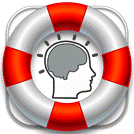Stimulants produce euphoria, improved self-esteem, increased sex drive, aggression & intensified emotions, but also increase anxiety, irritability, restlessness for 2-7 days even after mild use. In well-rested persons, certain physical performances can improve with small doses of stimulant drugs (You may remember the rage of using Ma Huang or Ephedrine). In tired users, stimulants cause most performance to deteriorate, and users often take unnecessary risks
Cocaine is a stimulant and a frequently abused street drug. It comes in various forms that are smoked, inhaled, and injected. Cocaine powder can be snorted or mixed with water and injected. When mixed with water and baking soda, it becomes a solid “rock” that is smoked as “crack.” The high is brief, lasting minutes to hours. A variety of amphetamines (including methamphetamine) are also widely available. Amphetamines are usually taken orally or intravenously but can also be snorted or smoked. The amphetamine high lasts 12-24 hours, and takes 1-4 days to exit the system. Nevertheless, they are fat soluble leading to “flashback” episodes
Other stimulants include prescribed and over-the-counter medications such as Adderall, methylphenidate, a medication for attention deficit disorder; dexadrine, used for weight loss; and ephedrine or pseudoephedrine, a decongestant. When these medications are used in higher amounts than recommended, they can have effects similar to cocaine and amphetamines. Additionally, use of ADD medications by people without ADD does not help them focus, it just keeps them awake.
intoxication and short-term effects on mental illness
In small doses, stimulants increase alertness, enhance energy, suppress appetite, and induce a feeling of well-being or euphoria. Think about the last time you drank a few cups of strong coffee. The high wears off rapidly, however, and often leads to a cycle of depression and repeated use that goes on for many hours or days.
At higher doses, symptoms of intoxication occur, including euphoria, hypervigilance, paranoia, agitation, sleeplessness, racing thoughts and pressured speech. Anxiety, irritability, and psychosis can also occur. With very high doses, confusion and disorientation can occur, as well as seizures, strokes, and heart attacks.
Even brief or occasional use of stimulants for a person with severe mental illness can induce or worsen psychiatric symptoms or precipitate major relapses. Episodes of mania or psychosis often are initiated by stimulant use, and depression is exacerbated by the cycle of stimulant use. When the person uses, the “feel good chemicals” are used up extra fast. When the drug wears off, there are not enough “feel good” chemicals left and depression sets in.
stimulant tolerance and withdrawal
The quick “high” followed quickly by the “crash” make stimulants highly addictive. Individuals often use the drug repeatedly to sustain the highs and avoid the lows. Repeated use produces tolerance, or diminished effects of the drug, and is followed by the use of larger amounts. This pattern can lead rapidly to addiction. While alcohol use typically transitions into addiction over years, people typically become addicted to cocaine and amphetamines within weeks or months (sometimes days).
When an individual stops heavy use of stimulants, withdrawal occurs. Withdrawal from stimulants occurs in three phases: The first phase is a “crash” with feelings of depression, agitation and intense craving. Within days, the individual experiences fatigue, low energy and decreased interest in just about everything. Weeks to months later, in the third phase, the individual may experience episodic intense craving. This is called protracted withdrawal and is a significant risk factor in relapse.
long-term effects
Addiction, by definition, involves increasing preoccupation with getting, using and recovering from a substance or behavior. Long term addiction often leads to criminal behavior. The euphoria of stimulants also results in risk-taking behaviors, and increases mental health symptoms such as anxiety, depression and hallucinations.
Over the long term, repeated use and the development of tolerance lead the user to more potent routes of administration, such as intravenous use (IV or injection), which dramatically increase the risk of blood-borne infections such as hepatitis and HIV. The viruses that cause hepatitis and AIDS are spread through contact with infected blood and sex fluids, which can occur when sharing a straw through which drugs are snorted, by sharing injection equipment, and by having unprotected sex.
The counselors at Doctor-Is-In can provide support, mental health counseling, substance abuse and addictions counseling and education on topics such as anger, anxiety, addictions, behavior modification, bulimia, binge eating, depression, grief, parenting, relationships, self-esteem, time management.
